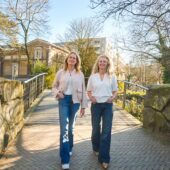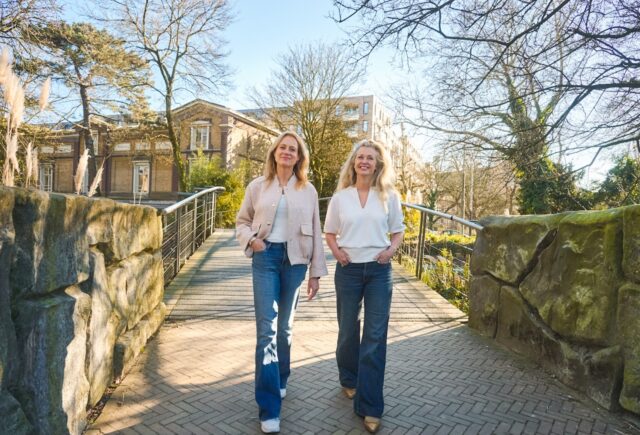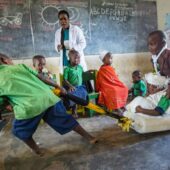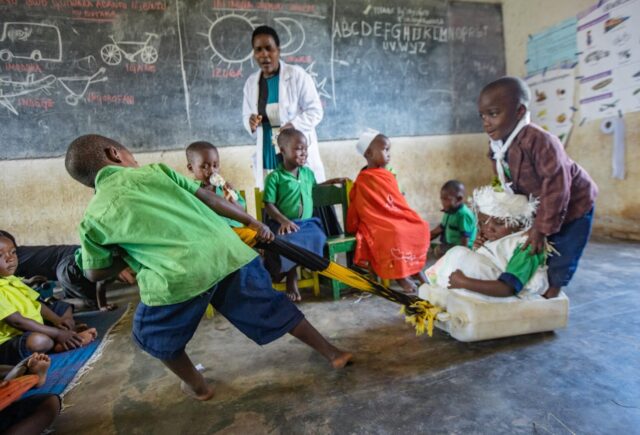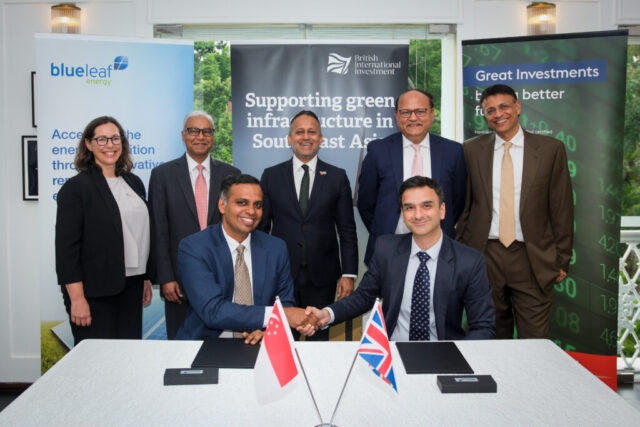As deforestation continues at an alarming rate, the &Green Fund has set itself a bold ambition. It wants to prove that responsible investment in large-scale agricultural production helps to protect tropical forests.
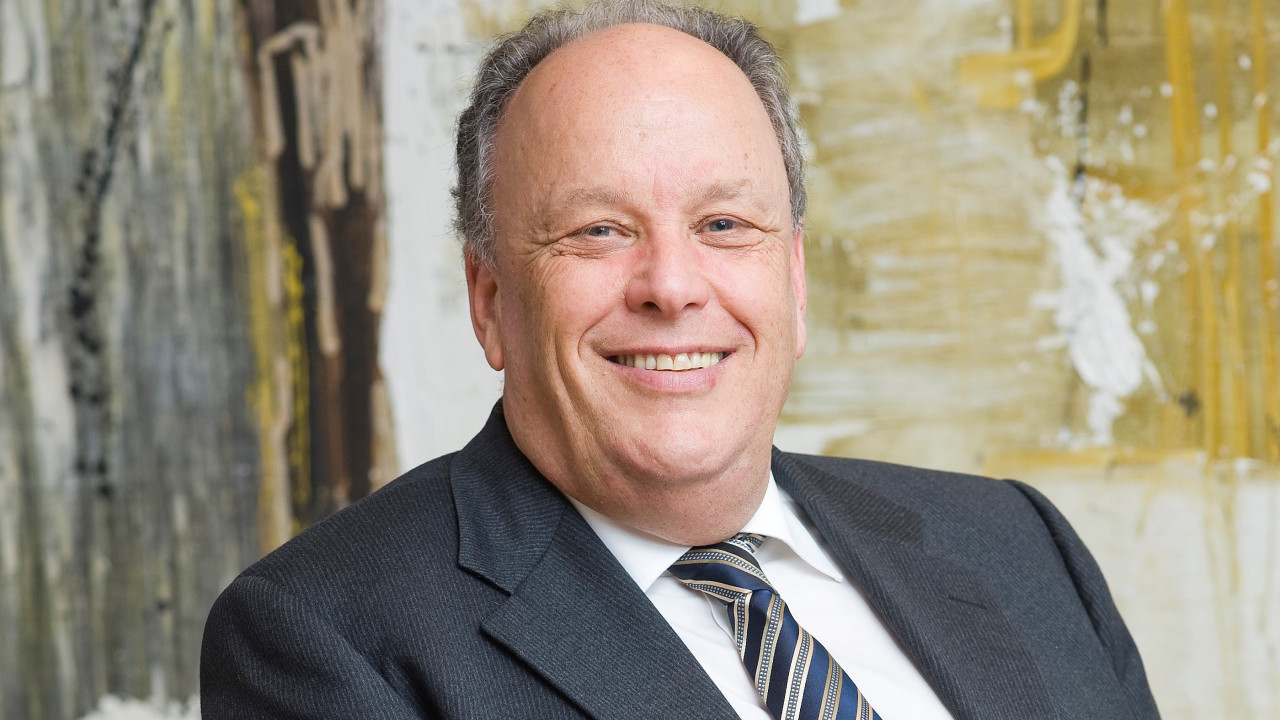
In short
- The &Green Fund was founded in 2017 to invest in large-scale agricultural commodities that drive deforestation of tropical forests, such as soy, meat, palm oil, cacao and coffee.
- It seeks to transform these supply chains to protect forests and improve the livelihoods of smallholder farmers.
- FMO, the Dutch development bank, recently invested $25mn in &Green.
The sweet spot for many impact investors would be companies that have a business that actively contributes to a better world and have the scale or are at least scalable to return a decent yield at some point.
The &Green Fund is doing something a bit more daring. It is actively looking for companies that are risky and associated with large-scale negative impacts. In their case: commercial agricultural producers that drive deforestation of precious tropical forests. Because in their view deforestation cannot be solved only by governments or NGOs.
“We’re doing the most difficult and complex commodities,” says Nanno Kleiterp, Chairman of &Green’s Board of Directors. “We’re looking for producers of commodities such as soy, meat, palm oil, cacao, coffee, some wood products. That’s where we want to make an impact.”
And here’s why: people may want to buy ‘palm-oil free’ food and personal care products, Kleiterp says, but palm oil is in everything because it is so efficient. In his view, you cannot get rid of palm oil any time soon, nor are people going to stop eating meat completely. “The target should be to get to deforestation-free palm oil and meat.”
But that is not the sole aim of the &Green Fund. The whole agricultural supply chain of the companies it invests in has to become sustainable and inclusive. That way, not only will tropical forests be protected and restored but production will increase and improve the livelihood of smallholder farmers.
“50% of deforestation is related to smallholder farmers,” Kleiterp notes. “They are key to preserving local habitat. They live there and want to protect their environment.” By supporting farmers through training to improve their agricultural practices and giving them access to better agricultural inputs, they can increase their productivity and the quality of their produce.
“We want to show that inclusive, sustainable and deforestation-free commodity production can be commercially viable,” Kleiterp says, who was the CEO of FMO, the Dutch development bank, from 2008 to 2016. Growing consumer demand is putting more pressure on producers to change, he adds.
Blended finance fund
“There are not many funds like ours”, Kleiterp says. “Scale and transforming the supply chain is key in our model. To protect the tropical forests, you need scale. That’s why we really target large companies, while most impact funds invest in small-scale businesses.”
&Green was set up as a foundation in 2017 by IDH Sustainable Trade Initiative, a Dutch organisation that brings together companies and governments to drive new sustainable production and trade models in emerging economies.
IDH founded the fund together with NICFI, Norway’s International Climate and Forest Initiative, which is also the so-called ‘anchor investor’ granting $100mn in investment capital. $1mn thereof is dedicated to the fund’s technical assistance (TA) budget.
Ford Foundation has also committed a grant to the fund’s TA budget, which can be used to partially support investees in implementing an impact measurement system or compliance with the fund’s strict environmental and social risk management requirements.
In 2018, Anglo-Dutch consumer group Unilever committed to a US$25mn redeemable grant, while the following year the Global Environment Facility (GEF), through the United Nations Environment Programme (UNEP) invested US$2mn, also as a redeemable grant.
“The fund was launched in Davos (World Economic Forum, ed) in 2017 by big companies and donors as a great idea. It’s much more complicated to get them on board though,” Kleiterp notes.
High ambition
&Green, which has currently $127mn in committed capital and should grow to $400mn by 2025, can be regarded as one big proof of concept. By then, five million hectares of tropical forest should be protected, and 500,000 smallholders/households should be benefiting from the fund’s investments.
Kleiterp is the first to admit that the debt fund’s ambitions are high. He may have a track record, but the &Green Fund does not yet. And he knows that “seeing is believing”.
The Dutchman has worked for more than forty years in different roles as an investor in emerging markets, especially in Latin America, where he was active in Peru, Mexico and Nicaragua. He was Chairman of IUCN, an NGO in nature conservation, for four years until 2017. Since 2017 he has also been a member of the Advisory Board of Commonland, a foundation that restores fragile landscapes.
First investments
Given the fund’s ambition, it is no surprise &Green has a long-term perspective. Transforming a supply chain takes a lot of time after all.
Under the terms of the fund, which is incorporated as a Dutch foundation, it can provide long-term subordinate credit (5 to 15 years) with ticket sizes ranging from $5-30mn (€4-22mn).
So far, the &Green Fund has invested in four companies, which all went through an extensive screening process. “Deals always take much longer. We all have to go through a learning process,” Kleiterp says.
Read also our separate story on the &Green Fund’s investment and impact strategy.
In Indonesia, it’s financing PT Royal Lestari Utama, a rubber producer in Sumatra, to develop three sustainable rubber concessions. These form part of a large project aimed at establishing a wildlife conservation area on the company’s Jambi concessions as a buffer to the Bukit Tigapuluh National Park, which is a habitat for critically endangered fauna such as tigers, orangutans and elephants.
The fund purchased 15 and 7-year notes worth a total of $23.75mn under the Tropical Landscape Financing Facility (TLFF), which allowed the TLFF to provide a S$95mn loan to the company as part of a $400mn financing package for the project. French tyre giant Michelin Group is one of the company’s shareholders.
Another investment in Indonesia is PT Dharma Satya Nusantara, a palm oil producer in Kalimantan. It received a 10-year $30mn loan to work towards a complete deforestation-free supply chain.
In Brazil, it co-finances two cattle producers. One of which, Roncador, will upscale its farming model, which integrates crops (predominantly soy) with livestock and also restores degraded pastures.
Fundraising is challenging
While building the team of SAIL Ventures, &Green’s investment advisor, went smoother than expected, fundraising has proven to be more challenging, says Kleiterp. The team consists of sixteen people in offices in Brazil, Indonesia and the Netherlands.
The risks involved are the “biggest hurdle”. “We’re adding up a lot of risks for a commercial investor,” Kleiterp says.
“First there is the emerging markets risk, then agriculture is high risk. It’s a sector where not that many banks are active, and then there are the social and environmental risks related to deforestation.”
In his view, public and private donors are not very accustomed yet to working with the private sector and providing commercial loans at market rates. “It’s a journey for them to understand the model and participate. Besides, we need bigger allocations than the $1-3mn private foundations in general could typically provide.”
Kleiterp says the fund needs to grow to a minimum fund size of $250-400mn to attract the interest of institutional investors. To get there, it’s working hard to raise more capital from donors and other sources of blended capital. This will allow &Green to build the necessary track record for private investors. The fund needs to get them on board to achieve “transformation at scale”, Kleiterp notes.
“We want to show that these risks can be managed in a responsible way and that we can yield a solid risk-adjusted return. Though it’s difficult to get investors on board I’m very optimistic that we will show our model can work and that more donors and development banks will finance us.”
Proof point
“I’m optimistic we will reach our $400mn funding target by 2025. I want to get to $1bn. We’re ticking a lot of the boxes: we contribute to the Sustainable Development Goals 13 and 15 (Climate Action and Life on Land) and it’s measurable how much forest has been protected.”
The reason for his confidence is that FMO, the Dutch development bank, and the Dutch Fund for Climate and Development which is managed by FMO, committed $25mn in long-term funding in April of this year.
“FMO maintains the highest market standards. This is proof that a development bank sees us as a viable investment,” Kleiterp says.
